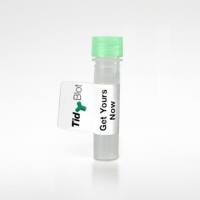LDI-PCR: Identification of Known and Unknown Gene Fusions of the Human MLL Gene
互联网
603
The human MLL gene is one of the most promiscuous recombination hot spots of our genome with regard to the onset of malignant diseases. With the exception of gene internal partial-tandem duplications involving several exons located in the 5′-end of MLL , all recombination events occur in a small genomic region flanked by MLL exons 8–14, designated as the MLL breakpoint cluster region. Efforts from different laboratories, including our own, have led to the identification of more than 50 MLL fusion partners that were characterized at the molecular level. The common theme of recombination events involving the human MLL gene is the creation of “functional” fusion genes that are translated into oncoproteins. Many different labs have already demonstrated that these MLL fusion proteins have the capability to instruct hematopoietic stem/precursor cells to convert into a preleukemic state, which finally leads to the onset of leukemia in experimental model systems.
Here we have focused on the identification of MLL fusion partners by using the genomic DNA of acute leukemia patients. After initial screening using for example split signal FISH experiments (as an example for technologies to identify MLL rearrangements), genomic DNA from leukemia patients is analyzed by long-distance-inverse (LDI)-PCR. LDI-PCR is based on the hydrolysis of patient DNA using distinct combinations of restriction enzymes, self-ligation of the resulting DNA fragments and a subsequent PCR reaction using a specific set of oligonucleotides. This strategy allows in principle any investigator to identify known and unknown MLL fusion partner genes. Furthermore, the genomic fusion site in MLL rearrangements represent a unique and reliable molecular marker that allows the tracing of minimal residual disease (MRD) in these patients before, during, and after therapy.









